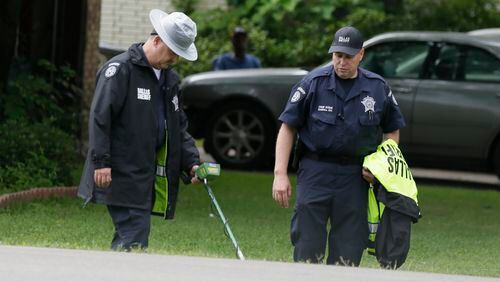The official story out of Balch Springs, Texas was that a police officer had been forced to fire into a carload of black teenagers, killing a 15-year-old passenger, because the car was being driven in an “aggressive manner” toward the officer.
That story changed only thanks to irrefutable video evidence. The new version acknowledges that no officer had been endangered, and that the vehicle had been moving safely away from police when the deadly shot was fired. Commendably, the officer who fired the fatal shot has been discharged.
The dead teenager was named Jordan Edwards.
"He was everybody's friend — his attitude and smile, everything was just contagious about him. He was excellent — 3.5 GPA, never in trouble, no attendance issues," Jordan's football coach said. "He was a kid that did everything right."
Closer to home in Gwinnett County, police officers pulled over a black motorist for a traffic stop last month. After the motorist emerged from his car as ordered, with both hands raised, he was punched in the face and Tasered. Later, when the motorist lay handcuffed on the ground, a second officer rushed up and stomped on his head.
According to initial police reports, neither incident happened. Only when cell-phone video evidence emerged did the police story change. To the credit of Gwinnett officials, both officers have been fired and charged.
And then of course there’s the infamous case of Walter Scott, the 50-year-old black man shot down from behind by an officer in North Charleston, S.C.
That too was initially explained away as an official case of police self-defense, at least until a citizen video emerged. Even with that evidence, a South Carolina jury failed to convict the officer, who this week pleaded guilty to a lesser charge.
In each of those cases, and in too many others, only video evidence allowed the official police version to be challenged. Without that video, valid claims of police brutality and indiscriminate use of deadly violence would have been treated the same way they had been treated for decades — whitewashed, condemned to echo as powerful oral history within the black community while the larger culture ignored them.
So here’s my fear:
Summer is coming on, and with it an increased chance of such encounters. In the past, the U.S. Justice Department has served as a helpful arbiter in calming local outrage and ensuring that a fair investigation is carried out. Now under new management, it is no longer capable of playing that role and has no interest in doing so.
Instead, U.S. Attorney General Jeff Sessions has made it clear that his biggest concern about allegations of police violence is the fear that they may make police officers less aggressive. He has ordered a review of all consent decrees between the Department of Justice and local police departments — decrees reached because the departments had demonstrated, proved problems — with an eye toward liberating those agencies from federal oversight.
“(Such consent decrees) can reduce morale of the police officers,” Sessions explained. “They can push back against being out on the street in a proactive way.”
President Trump, elected in part by a white backlash, has also advocated a more aggressive, less patient approach to protests and civil unrest in the wake of police shootings, even accusing groups such as Black Lives Matter of instigating assassinations of police officers. That combative attitude, in an already highly charged political environment, could prove to be explosive in the coming summer of 2017.
About the Author






